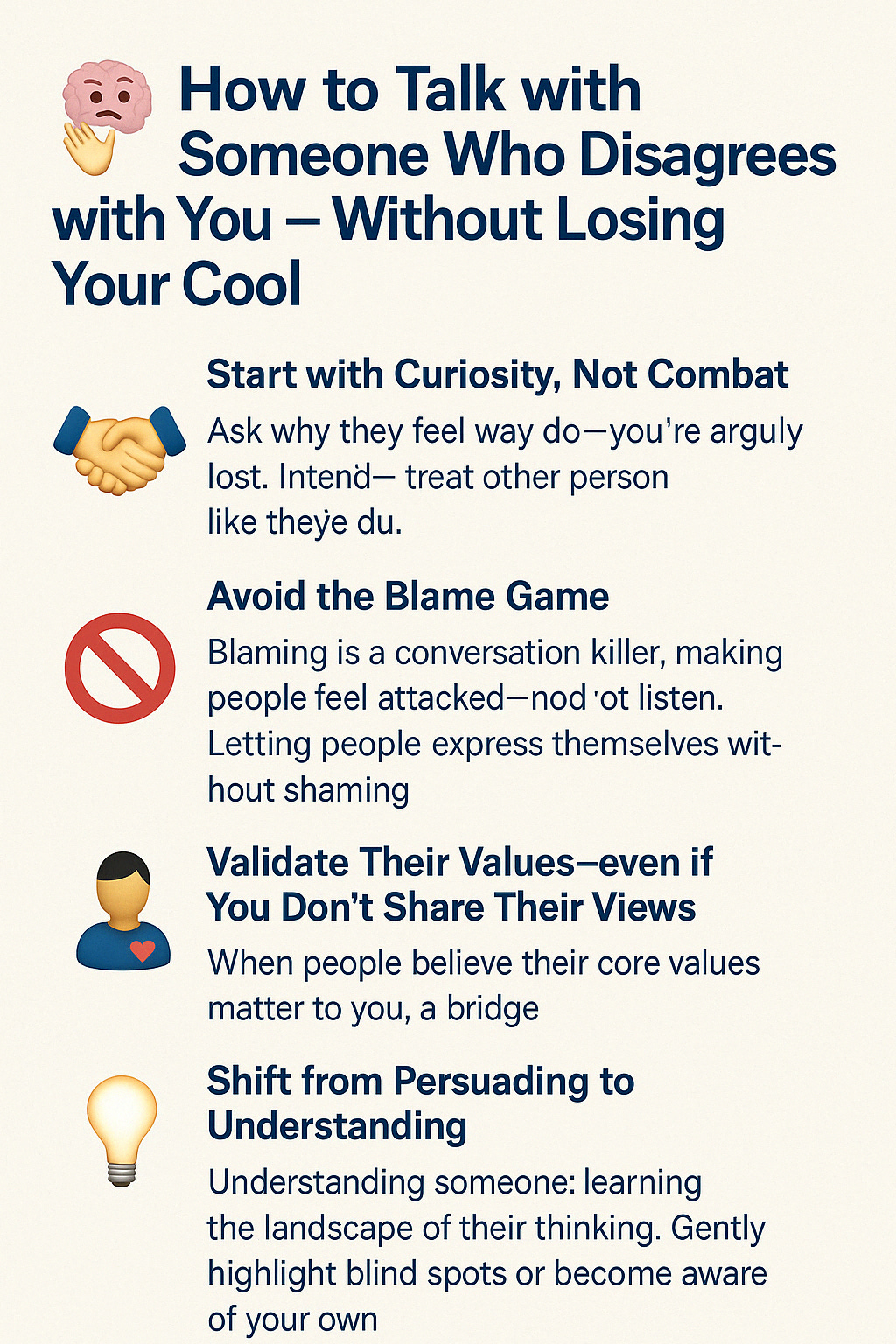In a world where opinions clash harder than cymbals in a drumline, having a calm, logical conversation with someone who disagrees with you feels almost revolutionary.
But here’s the truth: It can be done—and when done right, it can lead to deeper understanding, surprising common ground, and maybe even changed minds (yours or theirs).
🤝 Start with Curiosity, Not Combat
If your goal is to “win” the conversation, you’ve already lost. Conversations aren’t courtrooms. The moment you treat the other person like the opponent, their defenses shoot up—and now you’re in a battle, not a dialogue.
Instead:
Ask why they feel the way they do.
Be genuinely curious about their experience.
Invite them to share how they came to their conclusion.
Curiosity doesn’t mean agreement—it means respect.
🛑 Avoid the Blame Game
Blame is a conversation killer. It makes people feel attacked—and when people feel attacked, they don’t listen, they protect.
Saying things like:
“You always…”
“It’s your side that caused this…”
…only fuels division. Instead, try:
“How do you see this situation?”
“What do you think would help fix it?”
Give people space to express themselves without fear of being shamed. Ironically, when people don’t feel pressured to change their mind, they’re more likely to reflect and reconsider.
🧭 Validate Their Values—even if You Don’t Share Their Views
This is where the real magic happens.
When someone believes you're trying to erase or invalidate their values, they dig in. But when you show them that their core values—security, freedom, family, fairness—matter to you too, you create a bridge.
Examples:
“I get that freedom is really important to you. I feel that way too.”
“I think we both want a safer world—we might just have different ways of getting there.”
That small gesture of shared humanity? It builds trust. And trust is the soil where open minds grow.
🧩 Shift from Persuading to Understanding
If your goal is to convince, people will sense it.
If your goal is to connect, they’ll feel it.
Understanding someone doesn’t mean giving up your views—it means learning the landscape of their thinking. That’s how you can:
Gently highlight their blind spots or become aware of your own
Introduce new ideas without resistance
Keep the conversation going instead of slamming the door shut
When the focus is on shared understanding rather than scoring points, the conversation becomes fertile ground for insight—on both sides.
🧘 Detach from the Outcome
You might not change their mind today. Or ever.
That’s okay.
The real goal is to plant a seed of reflection—one that might grow in a week, a month, or a year. Some of the most powerful realizations come long after the conversation is over.
And who knows? You might walk away with a new perspective, too.
💬 Final Thought: Talk to Connect, Not Convert
We don’t need more shouting matches. We need more honest, humble, human conversations.
So next time you find yourself face-to-face with someone who sees the world differently, take a breath, drop the armor, and get curious.
Because the most powerful way to stand for your values… is to show others that theirs still matter.















Share this post